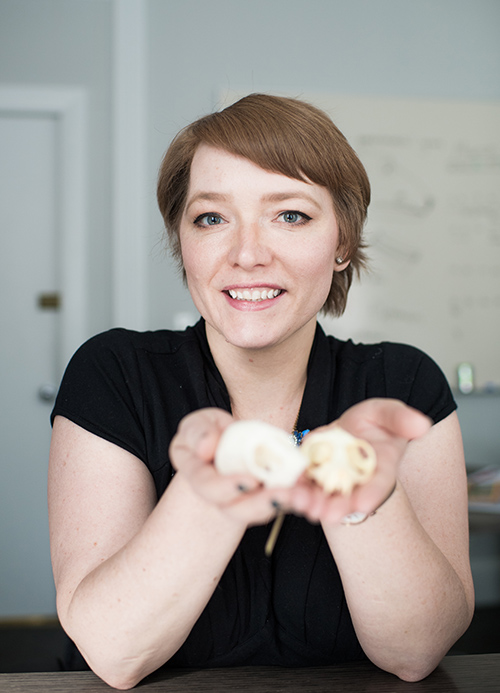
Assistant Professor
Areas of Expertise
Sensory ecology; olfaction; vomeronasal organ; primate evolution; evolutionary morphology; sensory systems; non-human primate paleontology; genomics; bioinformatics
About
Eva Garrett is co-PI of the Sensory Morphology and Genomic Anthropology Lab at Boston University. She has a broad interest in the evolution of sensory systems in primates, particularly the sense of smell and pheromone detection. Her research integrates diverse fields including morphology, genomics, and paleontology to understand how humans and our closest relatives have evolved our unique sensory adaptations. She is working with her current postdoctoral scholar and UROP students to create digital models of extant and fossil primate crania to measure a bony correlate of the vomeronasal organ which provides an estimate of genes related to pheromone detection. Using statistical models, Dr. Garrett and colleagues have demonstrated that contrary to the hypothesis that primates significantly reduced their reliance on smell early in their evolutionary history, only a recent branch of the primate tree (apes and Old World monkeys) have reduced their reliance on pheromone detection in favor of vision.
Selected Publications
- 2019 Melin, AD, Nevo O, Williamson RE, Garrett EC, Endo M, Sakurai K, Matsushita Y, Touhara K, Kawamura S. Fruit scent and observer colour vision shape food-selection strategies in wild capuchin monkeys. Nature Communications: 10(2407).
- 2014 Garrett EC and Steiper ME. Strong links between genomic and anatomical diversity of both mammalian olfactory chemosensory systems. Proceedings of the Royal Society B: Biological Sciences: 281(1783).
- 2013 Garrett EC, Dennis JC, Bhatnagar KP, Durham EL, Burrows AM, Bonar CJ, Steckler NK, Morrison EE, Smith TD. The vomeronasal complex of nocturnal strepsirhines and implications for the ancestral condition in primates. The Anatomical Record: 296(12) 1881-1894.
Courses
- CAS AN 102 Human Biology, Behavior, and Evolution
- CAS AN 331 Human Origins
- CAS AN 339 Primate Biomechanics
- CAS AN 552 Primate Anatomy and Evolution
- CAS AN 597 Primate Senses